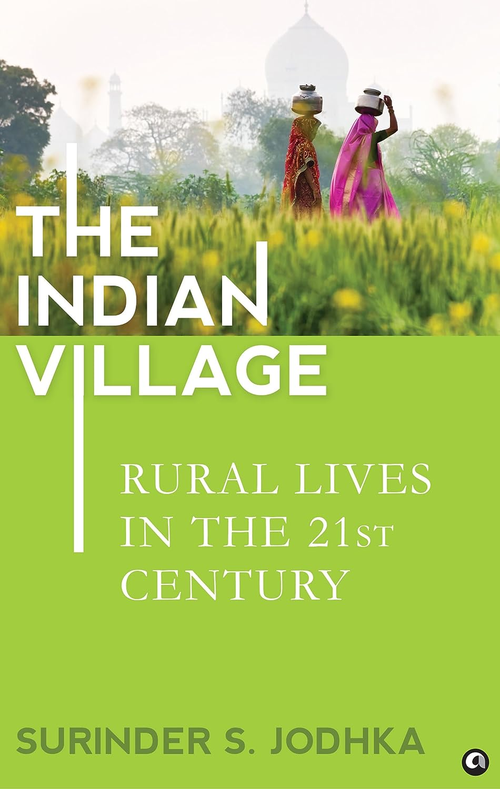Daanish Bin Nabi
New Delhi, Oct 12 (IANS) Rarely comes a book that needs to be read and understood not only from the perspective of subject experts, but by common people to comprehend and recognise the relationship between rural and urban India.
Prof. Surinder S. Jodkha's 'The Indian Village: Rural Lives in the 21st Century' (Aleph Books; Rs 799) sheds light on how the founding fathers of Independent India toiled hard to set the balance right, but ended up pushing very different agendas.
Prof. Jodkha touches upon the issues of religion, the caste system and the evil of untouchability to make the reader understand how the idea of 'village republics' evolved post-Independence.
The author has authoritatively delved in detail into the lives of peasants, the British view of Indian villages, how rural society and farming practices were reshaped post 1947.
The real deal in the book is Chapter 3 where Prof. Jodkha analyses the works of three influential thinkers -- Mahatma Gandhi, Jawaharlal Nehru and B.R. Ambedkar -- whose views on villages also reflected their visions of free and independent India.
Their perspectives on Indian villages were not mere political rhetoric invoked to counter the colonial powers. The most important among these thinkers was Mahatma Gandhi, whose ideas about village society are widely known.
Gandhi had emphatically said: "For me, India begins and ends in the villages." He also continued to underline the value of village life in his writings all his life. He was the most ardent and persuasive advocate of the idea of "the village being the soul of India".
Prof. Jodkha says that Gandhi's invocation of the idea of the Indian village appears to have evolved during his days in South Africa. Gandhi continued to see village life as an alternative way of living, an uthopia, even when he found faults with the realities of rural life in the Indian countryside.
He did not give up on the village but turned the politics around it upside down. He believed that real self-rule or Swaraj could only be achieved by restoring the civilisational strength of India, which meant a revival of its village communities.
The author notes that Gandhi's advocacy of village life was not to celebrate traditionalism; his was a plea for a kind of equality whereby villages are not treated as an inferior place. The village deserved autonomy if India were to arise as an independent nation, Gandhi believed.
Nehru, Gandhi's trusted disciple, differed with his guru on the issue of the primacy of the autonomous village in Independent India. He saw no virtue in reviewing the traditional social structure, as colonial and orientalist writings had presumably visualised or constructed it.
For Nehru, the solution to the problem of caste was in moving forward towards a democratic and modern social order. He also felt dismayed at the politically docile and fatalistic nature of the Indian peasants, who he believed had the capacity to bear famines, floods, disease and grinding poverty, and when they no longer can endure these afflictions, they quietly lie down and die. That was their escape route.
Ambedkar was the nemesis to the philosophies of both Gandhi and Nehru.
Prof. Jodhka says that Ambedkar was critical of both Gandhi and Nehru's views on rural life and how they wanted to take Independent India forward.
The village, according to Ambedkar, was "the working plant of the Hindu social order" where one could observe "the Hindu social order in operation in full swing". Far from being a harmonious community, the village for Ambedkar was a divided universe resting on the foundation of the oppressive caste system.
Prof. Jodkha says some of Ambedkar's arguments were best crystallised during Constituent Assembly debates where some members had argued passionately for making the village an autonomous administrative unit with its own legislature, executive and judiciary.
Ambedkar had vehemently opposed such a move. Gandhi and Nehru, on the other hand, had accepted the colonial construct of the 'village community' as a reality of India's past.
Ambedkar looked at it more critically. Given Ambedkar's training in the social sciences, he was able to locate the sources of this construct in the Orientalist narrative of India.
He also provided a sociological explanation for its uncritical acceptance by the middle-class elite of India. He had no great appreciation for the village. The ground realities of the villages were well understood by him and became a source of his critique of the undemocratic spirit of Indian society.
The author says that the village for Ambedkar was a microcosm of the Hindu social order, marked by hierarchies of caste and a culture of exclusion and discrimination, best reflected in the caste-based spatial division within the rural settlement.












